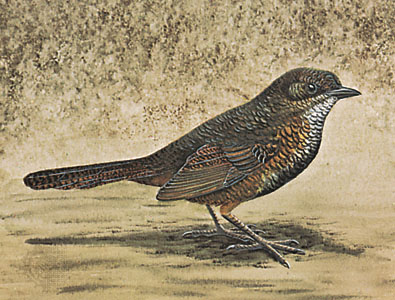Facts About Rufous scrubbird
The Rufous Scrubbird, a distinctive bird species indigenous to Australia, belongs to the Atrichornithidae family. There are two primary subspecies: A. r. rufescens and A. r. ferrieri. Both male and female Rufous Scrubbirds display brown plumage with a reddish breast and a subtly barred back. However, they can be distinguished by the male's white streaks on the neck and throat, while the female features a lighter breast without the white markings.
These birds inhabit a few isolated locations in northeastern New South Wales and southeastern Queensland. They thrive in dense ground cover and deep leaf litter within rainforests and wet eucalypt forests at elevations above 600 meters. Rufous Scrubbirds primarily feed on snails and insects they find on the forest floor.
The conservation status of the Rufous Scrubbird has experienced significant fluctuations. By the mid-20th century, the species was nearly extinct. Fortunately, their status improved to Near Threatened in 2004. However, by 2008, they were listed as Vulnerable, and by 2012, they were classified as Endangered. This decline was attributed to fragmented habitats and small populations. In the 1980s, the total population was estimated to be around 2,500 pairs, but through concerted conservation efforts, it has rebounded to approximately 12,000 pairs.
The decline of the Rufous Scrubbird was primarily caused by habitat loss due to the clearing of lowland areas, with logging also contributing significantly. Additionally, the aging of eucalypt forests has led to the degradation of the understorey, which is essential for the birds. Ongoing conservation efforts aim to protect and preserve the Rufous Scrubbird, ensuring its continued survival in the wild.
